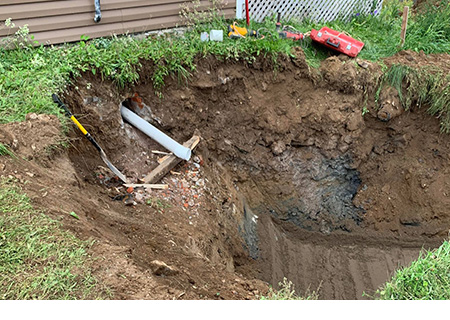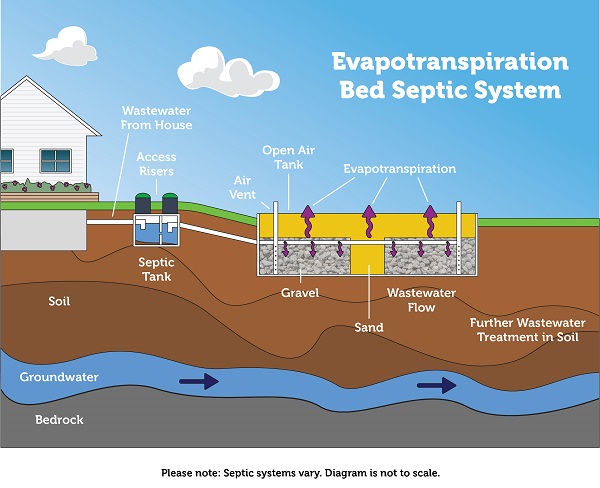Rural areas often don't have sewer lines. It means that domestic water treatment facilities are required to treat the waste. There are many home septic tank options however they all perform the same thing: remove waste from your homes and filter out harmful substances. Then, you can discharge clean water into water surrounding. Costs are influenced by the size and capacity of the tank. Larger tanks can reduce the amount of work needed due to less liquid generated each day as compared to smaller tanks.
How Much Will A Tank System For Septic Cost?
The conventional septic system is outdated and does not function as efficiently as it did in the past. It's possible to spend between $2,500 and $5K in the United States before factoring permits for installation- not including the cost of piping your drain field, or soil testing needs! Aerobic and anaerobic kinds are the ones you need to be thinking about if budget isn't really something foremost in your mind. These machines are referred to as "septic systems" and they can be bought. These are costly at first however they can last for many decades and don't require any maintenance.
Aerobic systems utilize oxygen to accelerate the process of decomposition and create a cleaner water as compared to other methods. Actually, you could make use of this wastewater to water your garden if there isn't another source. Anaerobic food items need less space since they consume about half the surface area of traditional systems. However, it comes at a steep price starting at 13000 dollars for 1000 gallons that are treated every year. See the best how to septic systems work for info.

How Much Does The Septic Tank Cost In All?
Polyethylene or plastic septic tanks are the most affordable and light-weight alternative. An average cost of 1,000-gallon tanks can be as low as 11 hundred dollars. But leaks can be a concern in some states. They've been prohibited in the US due to cracked tanks leading to costly repairs. The tried and tested concrete septic tank is a durable machine that can last for decades without needing replacement. While these tanks can be recognized for their cracks however, they are generally not too severe. It is important to note however that they come with an initial cost that is higher at approximately twelve hundred dollars for each thousand gallons. Fiberglass septic tanks can be ideal for homeowners who are looking to lower their costs but still enjoy a simple installation. Unlike concrete or plastic tanks, which can be difficult to install with limited space in some cases; fiberglass units do not have cracks like others on this list and they're lighter too! This reduces the strain on your home and can result in better construction quality all around.
What Is The Significance Of All This?
It can be difficult to grasp all the elements that influence your septic tank costs. It is important to know the costs of installation options and their costs. NexGen Septics can help in making that decision. We offer detailed explanations on everything from permits to soil preparation through the cost of maintenance - all of which play an integral role in determining overall price tags when installing new systems, as well. Have a look at the recommended how do septic tank systems work for recommendations.

Septic Systems Types
It is difficult to choose the right septic tank system. The type you choose will impact the cost and the effectiveness of it and whether there is enough room for it to be put in place. The two most popular kinds are:
1.) Anaerobic Septic System
One of the greatest things about a system for cleaning septic is the inability to utilize electricity. These systems rely on anaerobic bacteria that process and eliminate waste from the water pipe in your home until there aren't nutrients for them anymore-and then they pull these away from any other sources, including household plumbing fixtures or even human excrement! This type can be installed effortlessly, with prices ranging between $2k and 5K depending upon what you want-whether it's a basic design or includes features like an extra capacity for pumping, or. Installation is simple and anyone who has completed any sort of work or homework ought to feel at ease.
2.) Aerobic Septic System
Aerobic systems utilize aerobic bacteria in order to eliminate wastewater from the septic tank. To make this process more efficient the use of a timer and motor are combined with effluent to ensure more efficient treatment of wastewater while not letting it overflow into your lawn or crop like anaerobic tanks would without proper installation techniques from companies such as ourselves! These advanced toilets cost $13k to $26K per year, which is less than half of what is needed by pit toilets that are traditionally used.
Septic Tank Types
You can choose from gravel, concrete, or plastic septic tanks made of plastic, gravel, or concrete. Additionally, there are fiberglass-based ones. This material is light but sturdy enough for long-lasting use in extreme conditions like those that are found on farms , where it could be muddy or wet frequently because of irrigation systems that pump water around. Concrete is another choice because of its weight which guarantees stability and doesn't cause your home to fall over when it's inundated by rainwater. We also discovered these lightweight and durable, bags made of polyester that you can get almost everywhere today. These are especially useful for homes that are close to an urban area as the urbanization process is bringing us closer to each other than ever before. Have a look at the best how does septic tanks work for examples.

Plastic Septic Tanks
While septic tanks are an excellent way to manage your waste, it's important to ensure you purchase one that will last for. Polyethylene is the lightest and most economical kind of septic system you can buy. However, they're more likely to explode or crack in time. The quality of the plastic has been improved to make them more robust. But the use of these toilets is restricted in certain regions, like California. The cost of 1000-gallon models varies based on region of the location.
Fiberglass Septic Tanks
Fiberglass septic tanks weigh less than other types and are easier to install. They also do not shrink or expand which prevents fractures from developing in the tank as time passes unlike porous materials like clay-based soil systems, for instance. The cost of fiberglass varies based on the size, but generally range between $1600 to $2000 for 1000 gallons , and up to 1500 gallon capacity. This will increase the cost by approximately 50% to 100%.
Concrete Septic Tanks
Concrete septic tanks can last up to 30 year provided they are constructed correctly. 1000 gallons of concrete cost $1200, and 1500 gallon models will cost approximately $1800. A concrete tank can last for about 15 years. But, based on the routine of maintenance it can last longer.